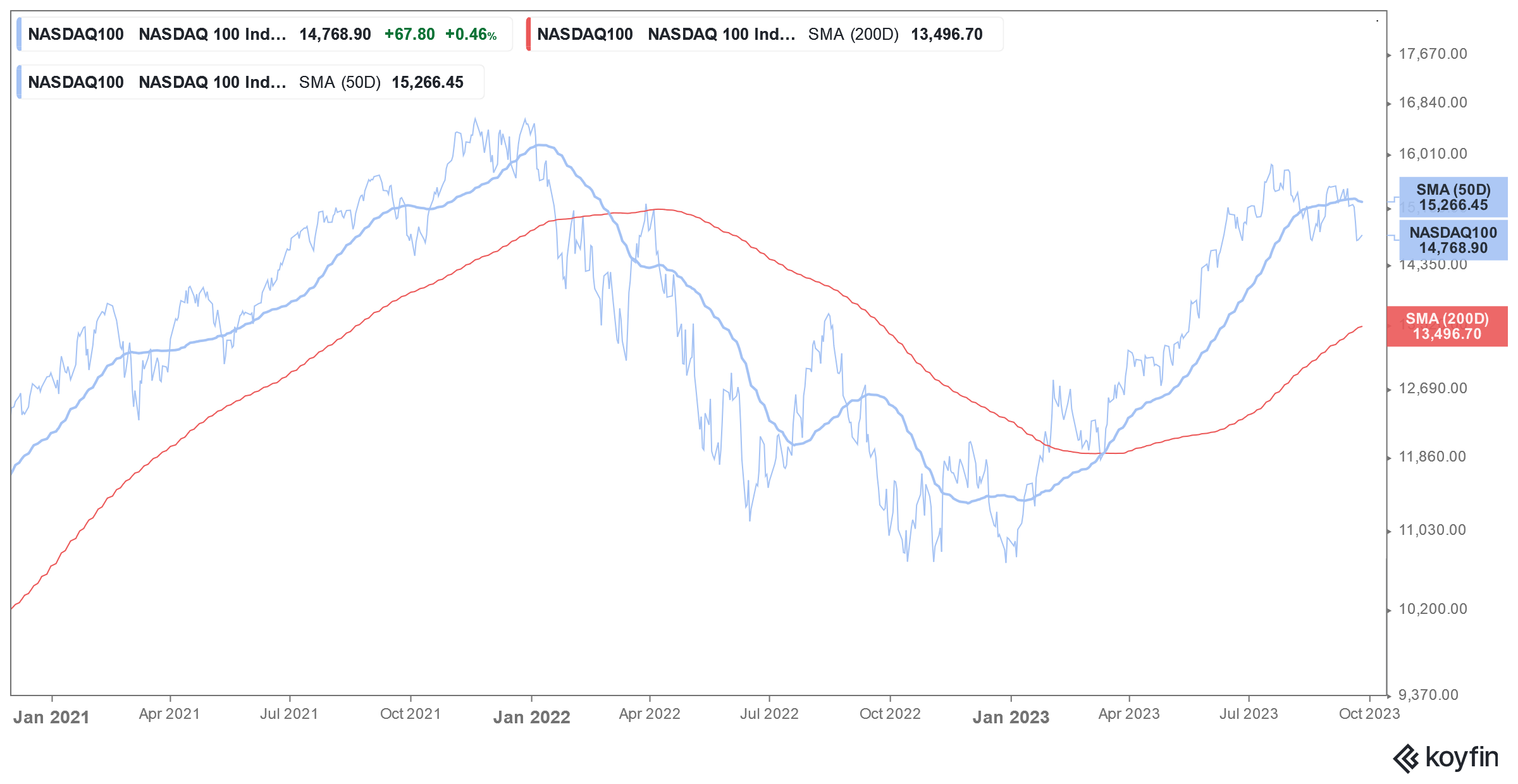Jerome Powell Dashes Rate Cut Hopes Calling Them “Premature”
Please note that we are not authorised to provide any investment advice. The content on this page is for information purposes only.
It’s been almost 18 months since market participants started talking about a Fed pivot or a move from rate hikes to rate cuts. However, Fed chair Jerome Powell has dashed rate cut hopes on multiple occasions and termed them as “premature” earlier this week.
In his speech at Spelman College Atlanta, Powell said, “It would be premature to conclude with confidence that we have achieved a sufficiently restrictive stance, or to speculate on when policy might ease.”
He added, “Having come so far so quickly, the FOMC is moving forward carefully, as the risks of under- and over-tightening are becoming more balanced.” Powell’s speech comes a month after the FOMC’s meeting where the Fed kept rates steady.
Table of Contents
Fed maintained the status quo in the previous meeting
The Fed has been on a rate-hiking spree since March 2022 starting with 25 basis points in March 2022 followed by 50 basis points in May. In the next four meetings of 2022, it raised rates by 75 basis points – a pace not seen in years – but toned down the hike to 50 basis points in December. The Fed has so far raised rates four times in 2023 by 25 basis points each.
Powell talked about the US economy
Meanwhile, in his speech, Powell said, “As the demand- and supply-related effects of the pandemic continue to unwind, uncertainty about the outlook for the economy is unusually elevated.”
He added, “Like most forecasters, my colleagues and I anticipate that growth in spending and output will slow over the next year, as the effects of the pandemic and the reopening fade and as restrictive monetary policy weighs on aggregate demand.”
Meanwhile, many economists predict that the Fed’s rate hikes might push the US economy into a recession. “Bond king” Jeffrey Gundlach believes that the Fed cut rates in 2024 as the US economy enters into a recession. On his part, Powell has said that while the Fed’s rate hikes might lead to a recession, it is not an economic outcome that it is pushing for.
US inflation has come down
Meanwhile, US inflation peaked in 2022 and has since come down. In October, the PCE (personal consumption expenditure) rose 3% while the so-called core PCE – which excludes the volatile food and energy prices – rose 3.5%.
Notably, gas prices have fallen over the last month which has also put downward pressure on inflation.
That said, the current inflation is still higher than the 2% that the US Central Bank targets. In his speech, Powell admitted that the current inflation is “well above” the Fed’s target but is “moving in the right direction.” Powell said, “while the lower inflation readings of the past few months are welcome, that progress must continue if we are to reach our 2 percent objective.”
He added, “So we think the right thing to be doing now is to be moving carefully, thinking carefully about about how things are going on letting letting the data tell us what the story is. The data will tell us whether we’ve done enough or whether we need to do more.”
US shares hit 2023 highs
While US shares jumped in the first half of 2023 and the Nasdaq Composite had its best first-half performance in four decades, they fell subsequently, among others due to the hawkish stance of Powell and some of the other FOMC members,
Meanwhile, despite Powell’s comments, US shares rose on Friday and both the S&P 500 and Dow Jones Index rose to their highest level of the year.
Notably, the yields on 10-year US Treasury surpassed 5% in October but have since fallen to around 4.2% as markets now believe that Powell and Co. are at least done with the rate hikes even as the comments on the trajectory of rate cuts might be a bit hawkish.
According to Mona Mahajan, senior investment strategist at Edward Jones, “There’s a trifecta of drivers here. The first is the inflation. Second is the Fed seeming like it may be stepping to the sidelines, and then third is this cooling in the economy that is starting to unfold, but at a very gradual pace.”
Mahajan believes that markets are now factoring rate cuts in the back half of 2024 and added, “It’s almost like a Goldilocks cooling. It’s not too hot. It’s not too cold. And that’s exactly what markets are embracing.”
Have Powell and the Fed solved the inflation problem?
Bob Doll, chief investment officer at Crossmark Global Investments termed the rise in US shares to seasonal strength. He however, added, “If the market still buys the notion that the Fed has solved the inflation problem and that they’re going to cut rates next year, but that the economy’s gonna be okay and earnings will be fine—and that’s the consensus line at the moment—then that’s good enough for stocks to go higher.”
US inflation has been sticky amid high wages and shelter costs. Notably, in 2020, the US Central Bank changed its inflation-targeting approach and now targets an average inflation of 2% rather than chasing absolute numbers. The mandate gives Powell and co. more leeway in deciding on monetary policy, unlike previously where its mandate was to keep inflation below 2% at all times.
While inflation has fallen sharply after the annualized CPI peaked at 9.1% in June 2022, it is still high for comfort. Even as the CME FedWatch tool shows that almost all traders predict rate cuts in 2024, Powell has disappointed rate-cut proponents on more than one occasion over the past year.






